Zashrunbu Temple means "auspicious Xumi Temple". Its full name is "Zashrunbu Baijid Qinqu Tangkelenan Bajawalin". It means "auspicious must gather in Fushu to win over Fangzhou". Located at the foot of Nisri Mountain in Xigaze, Tibet. It is the largest temple in the area.
Ming Dynasty orthodoxy 12 years, Zongkaba disciple Gendun built. Later Fourth Panchen Luosang was expanded by Jijianzan. In the temple, there are 2,000 chanting people in the Maoqin Hall. There are statues of Sakyamuni in the hall. On both sides, there are statues of the Dunhua and the Fourth Panchen. On both sides of the hall are Maitreya Hall and Dumu Hall. On the west side of the temple is the Great Maitreya Hall, which is 30 meters high and magnificent. There are also Panchen spiritual pagoda hall, Tibetan Sari body. The temple has four warehouses (academies), which pay equal attention to teaching.
Zashlunbu Temple is comparable to the Potala Palace of the Dalai Lama. It is jointly known as the "Four Great Monasteries" of the Gelug Sect of Tibetan Buddhism with Gandan Temple, Sala Temple and Zhepeng Temple, the "Three Great Monasteries" in Lhasa. The four monasteries, the Tar Monastery in Qinghai Province and the Labrang Monastery in Gansu Province are listed as the "six monasteries" of the Gelug School. Architectural structure also has a profound impact on other Tibetan Buddhist buildings such as Wudangzhao.
Zashrunbu Temple is one of the six famous temples of Huang religion in China. One of the key cultural relics protection units in China. In August 2017, it was approved as a national 5A tourist attraction.
Main building
The most magnificent buildings of the temple are the Great Maitreya Hall and the Panchen Lingta Hall. The Great Maitreya Hall is located on the west side of the monastery. It is 30 meters high. It is dedicated to the statue of Maitreya cast in 1914 by the Ninth Panchen Quijinima.
The temple has four Zacang (School of Economics) in Tuosanglin, Xiazi, Jikang and Aba. In addition, Shilundian, Yinjing Academy, Hanfu Hall and so on also have a considerable scale. The Hanfu Hall was built during the 7th Panchen Chan. The hall displays gifts from Qing emperors to Panchen Chan. Upstairs hangs a giant portrait of Emperor Qianlong. The PianDian is the living room where the Qing ministers stationed in Tibet met with Panchen Chan. In addition to collecting a large number of gold, silver and jade articles, the hall also preserves important cultural relics such as seals, Buddha statues, porcelain and textiles.
The Maoqin Hall is the earliest building of the temple. In front of the temple, there is a lecture hall of 500 square meters, which is the place where Panchen Chan speaks and debates scriptures to the monks of the whole temple. The hall can accommodate more than 2,000 chants at the same time. In addition to Sakyamuni Buddha and his great disciples, the statues of Gendun Master and Panchen IV, who built the temple, and the statues of Zongkaba Masters and apprentices and eighty eminent monks, were inscribed on the pillars on both sides.
The Great Sutra Hall, the Palace of Mischin, is the earliest building of Zashrunbu Temple, which took 12 years to complete. In front of the Great Sutra Hall, there is a lecture hall of more than 600 square meters, which is the place where the Panchen Chan preaches and debates sutras to the monks of the whole temple. There are four walls of the lecture hall, with Buddhist ancestors caved in the cave walls, four great heavenly kings, eighteen Arhats and one thousand Buddhist statues in different forms, eighty Buddhist monks and various flying fairies and bodhisattvas. Within the Great Sutra Hall, forty-eight pillars of vermilion lacquer stand tall from afar, supporting the throne of Panchen in the center of the top hall of the palace. On the left side of the hall, in 1461, the Buddha Hall, which was expanded with the support of King Jue Wuzhabeng of Arigoug, created an eleven-meter-high statue of Maitreya Buddha, with a charitable and graceful face. It was completed by Nepalese craftsmen and Tibetan craftsmen. On the right side of the hall is the Dumu Buddha Hall, in which there are two meters high bronze statues of the white Dumu Mother, and on both sides are mud statues of the green Dumu Mother. Inside the hall is paved with schist at the foot of the Himalayas, and the whole environment is filled with a strong atmosphere of practice.
Kanalakang, meaning "Han Buddhist Hall", is a Buddhist hall rarely seen in other Tibetan monasteries. There are many gifts such as Yongle ancient porcelain, golden and silver wine, tea bowls and dishes, jade utensils, textiles and so on, which were presented by emperors of past dynasties. The earliest nine bronze Buddha statues of the Tang Dynasty were brought into Tibet by Princess Wencheng. Later, there was a bronze statue of a naked female Duma*sitting on a wild boar in the Yuan Dynasty, and a 16.5-jin gold seal in three languages, Han, Mongolian and Tibetan, given to Panchen by the Qing emperor. In addition, there are gemstone Buddha beads, seal edicts, scriptures and so on.
There is a meeting hall of the
Qing Dynasty stationed in Tibet between Daju and Panchen. The main hall is hung
with a large portrait of Emperor Qianlong of the Qing Dynasty wearing a robe
and carrying a Falun on his hand. It has a tablet of Emperor Daoguang under it,
and the words "Long live the Emperor Daoguang". Every time the
emperor makes a decree, after receiving the decree of Panchen Chan, he should
kowtow thanks in front of the emperor's plaque. The cultural relics in the Hall
of Han Buddha prove the affiliation between Tibet and the central court of the
past dynasties.
Qiangba Buddhist Hall, on the west side of Zashrunbu Temple, has a grand hall, which is Qiangba Buddhist Hall. Tibetan is called Qiangba Kang. There is a bronze Buddha statue of Qiangba, which attracts the most attention. The hall was built in 1914 under the auspices of the Ninth Panchen Qujinima. The Qiangba Buddha Hall is a five-storey hall with two corridors below. The hall is thirty meters high and has an area of 862 square meters. All the Buddhist halls are built of stone with dense joints and solemnity. The whole Buddhist hall is divided into four steps, which are folded and raised one by one. Each top corner of each floor has a divisional master. The upper eaves of the palace are decorated with copper bells, and the palace is decorated with copper pillars and gold roofs, which is magnificent and magnificent. In front of the Buddhist Hall of Qiangba, it stands tall and straight up to the clouds. Qiangbafo sits on a lotus pedestal up to 3.8 meters, facing south, overlooking the temple. The statue is 26.2 meters high, 11.5 meters wide, 4.2 meters long, 3.2 meters long, 1.2 meters long in the middle finger, 2.8 meters long in the ear. It is the treasure of the giant sculpture ranks, and the tallest and largest bronze statue Buddha in the world. It took 110 craftsmen four years to make the Buddha statue. The total consumption of gold is 67002 and brass is more than 230,000 jin. There are more than 1400 diamonds, pearls, ambers, corals and earstones in the white hairs between the brows of Buddha statues, and more precious decorations.
Qiangba Buddha is Maitreya Buddha of Han Buddhism. In Tibetan Buddhism, Qiangba Buddha is the future Buddha in charge of the future, so it is highly valued by believers.
Ling pagoda Hall
The spiritual pagoda of Zashrunbu Temple is the relic pagoda of Panchen Chan in successive dynasties. There are 8 Panchen spiritual pagodas built in Zashrunbu Temple. During the Cultural Revolution, the sacrificial halls of the 5th to 9th Panchen spiritual pagodas were destroyed. From 1985 to 1989, the 10th Panchen Master rebuilt a funeral tower hall for the 5th to 9th Panchen, named "Zashi Nanjie" (auspicious heaven). The spiritual pagoda of the 4th Panchen was rebuilt in the spirit Hall of the 5th Panchen in the 1970s. The spiritual pagoda and sacrificial Hall of Panchen I to III were not built in Zashrunbu Temple. Panchen I was the third abbot of Gandan Temple, and the spiritual pagoda was built in Gandan Temple after the death. Second and third, the spiritual pagodas of the former Emperor of Panchen Chan, Chiba, were all built in the Emperor's Temple after his death.
Qu Kangxia is also the spiritual pagoda Hall of the Fourth Panchen Chan. The spiritual pagoda of the 4th Panchen Buddhist monk Rosangquji (1567 - 1662) is very luxurious, thanks to his great contribution to the Zashrunbu Temple, which was built at the beginning only on the lower floor of the Great Hall. In the fourth Panchen period, the Great Sutra Hall was expanded to three floors and other Sutras were built. This is also the largest expansion of the Zashrunbu Temple. It played a positive role in promoting Buddhist Dharma, teaching righteousness and enlarging Zashi's influence. Later, after the expansion of Panchen Chan in successive dynasties, it formed the current scale. The fourth Panchen lived for 94 years. Because of his outstanding contribution to Zashrunbu Temple, the monks built this magnificent spiritual pagoda palace in memory of him. It took four years and one hundred and thirty days to build the spiritual pagoda hall in 1666. It was 11 meters high and cost more than 2,700 gold, 33,000 silver, 78,000 Jin copper and more than 9,000 feet of silk and satin. In addition, there were more than 7,000 corals, pearls, agate and turquoise, all of which were colorful and glorious.
Zhassnanger
From the beginning of construction to January 22, 1989, the opening ceremony was held. It lasted three years and eight months. The total building area was 1933 square meters, and the height was 33.17 meters. The height of the spiritual pagoda was 11.52 meters. The tower body is wrapped in silver and gold, covered with jewelry, beautifully carved and solemnly shaped. The interior decoration of the tower is also exquisite and numerous. The bones of the 5th to 9th Panchen Chan are separated into five sandalwood boxes and placed in the vase of the spiritual tower. In the center of the spiritual pagoda is a bronze statue of Ginima, the Ninth Panchen Opera. The walls around the hall are painted with murals of famous monks of various sects of Tibetan Buddhism. The construction of this spiritual pagoda has received strong support from the central government and Tibetan governments at all levels and relevant departments. The 10th Panchen Master said before his students, "The construction of Zhashi Nanjie is the crystallization of the Tibetan and Han people's common labor, the concrete embodiment of the patriotism of Tibetan monks and secular people, and the symbol of the unity of Tibetan and Han nationalities."
"Shi Song Nan Jie" is the 10th Panchen Erdeni Zhenjianzan Master Lingta Temple. The master was a great patriot in China, an outstanding leader of Tibetan Buddhism in China, and honorary president of the Chinese Buddhist Association. On 28 January 1989, he was completely silent during his visit to Shigaze. In order to express the people's feelings of remembrance for Panchen Master, on the third day after the Master's death, the Party Central Committee and the State Council decided to build the spiritual pagoda and sacrificial Hall of the Master's remains at Zashrunbu Temple for people to worship and remember his patriotic and patriotic achievements. After on-the-spot investigation, demonstration and design, on September 20, 1990, the construction of the spiritual pagoda began to lay a foundation. In order to build the spiritual pagoda and worship hall, the state allocated 64.24 million yuan, 614 kilograms of gold and 275 kilograms of silver. In the course of the project, people from all walks of life and the masses also actively supported the construction of spiritual pagodas and sacrificial halls, participated in voluntary labor, and made voluntary donations. After three years, on September 4, 1993, the 10th Panchen Erdeniqujijianzan Master Ling Pagoda Ceremony was solemnly held in Zashrunbu Temple. The Hall of "Shisong Nanjie" is displayed in front of the world, with a total floor area of 1933 square meters and a height of 35.25 meters. The main body of the sacrificial hall adopts the reinforced concrete frame structure in modern architecture. The walls are built with granite. The thickness of the walls is 1.83 meters, which meets the requirement of eight-degree fortification. The whole building is dominated by the ancient Tibetan religious architectural style, absorbing the architectural art features of Tang and Qing dynasties and the Buddhist spiritual tower architectural form. The sacrificial hall is composed of red and brown buildings. At the top of the hall, it is covered with golden roof with national and religious characteristics. The Lingta covers an area of 253 square meters and is 11.55 meters tall. The tower is covered with gold and covered with jewelry. There are 818 jewelry bags, totaling 24 kinds of jewelry, 6794.
Dumu and Dumu Hall
"Duma" is the incarnation of Guanshiyin, which is worshipped by Tibetan Buddhism. Maitreya Hall, built in Tibetan as "Qiangbakang" in the 5th year of Shunwu Tomorrow (1461), offers a statue of Miqin Buddha eleven meters high, made by Tibetan craftsmen, with Guanyin and special Bodhisattva statues hand-sculpted by Gendun Zhuba on both sides. It is the oldest statue of Zashrumbu Temple. The Great Maitreya Hall is dedicated to the bronze statue of Maitreya, cast by the Ninth Panchen Ginima in 1914. The statue is 22.4 meters high, the lotus seat is 3.8 meters high and the total height is 26.2 meters. When the statue was built, more than 1400 precious stones, such as copper 115000 kg, gold 279 kg, pearls 300 pieces, coral, amber, pine ear stone and so on, were embedded in the eyebrows of the Buddha statue. There were one extra large diamond, 30 silkworm head diamonds, more than 60 pearls and other precious stones. They were the largest bronze Buddha sitting statues in the world. Located in the eastern part of the temple, there are seven spiritual pagodas, the most famous of which is the Chuegan Xia Dian. The fourth Panchen spiritual Pagoda in the temple was built in the first year of Kangxi in the Qing Dynasty (1662 AD). The pagoda is 11 meters high, with gold and silver as its base, silver skin wrapped in jewelry, jade and other objects. The pagoda contains the remains of the fourth Panchen. The murals on the inner walls of the temple are mainly biographical, including ritual Buddha and eighteen Arhats.
Dumu Hall is located on the east side of the three Buddhist halls behind the monastery Scripture hall. The center of the three halls is the Sakyamuni Hall and the west side is the Maitreya Hall. There are bronze statues of Sakyamuni in the Sakyamuni Hall, which are more than 5 meters high. It is said that there are Sakyamuni Sherley in the body, Zongruba's hair and the skull of Gunzhuba's master, Siransenge. The Dumu Hall is called Zhuomakang in Tibetan. It is a bronze statue of the white Dumu, 2 meters high, with mud statues of the green Dumu on both sides.
Historical evolution
The founder of Zashrumbu Monastery was Gendun Juba (Gendun Master, 1391-1474), which was later traced back to the first Dalai Lama. In 1447 (the twelfth year of Ming orthodoxy), in commemoration of his silent teacher, Gendun Juba hired Tibetan and Nepalese craftsmen to make a 5-meter-high bronze statue of Sakyamuni. After the founding of the statue, Gendun Zhuba built Zhashlenbu Temple to worship Buddha statues with the help of Quxiong Langba Solangbaisang and Jonjeba Solangbanjue, the great Tibetan nobles. At first, the monastery was called Gangjian Dianpei, which means Xueyu Xingfo Temple. The monastery was built in September of the Tibetan calendar in 1447. One year later, the first Buddhist temple, the Sakyamuni Temple, was built. Subsequently, the Chaoqin Hall for monks to practice and recite sutras, the Lazhang Palace for monks to live in, and the general monastery were built. By 1459, Zashrunbu Temple had taken shape, with five large and small Buddhist halls, 12 Buddhist statues and nearly 200 monks. After the completion of the temple, Gendun Juba became the first Fatai, and successively built the Mizong Buddhist Hall, the Grand Sutra Court and the Exhibition Buddhist Platform. The number of large and small Buddhist Halls increased to 7. There were 53 Buddhist statues worshipped, and about 2,000 painted and stone-carved Buddhist statues distributed on the walls of the temple and the lecture hall. Tiesanglin, Xierzi and Jikang have been built in the temple. There are more than 1600 monks living in the temple. They come from Houzang, Ali, Nepal and Kashmir. Zhashlenbu Temple became the basic Taoist ground of the Gelug sect in Houzang.
In 1601, the fourth Panchen Master Rosan
Qujiezhen (1570-1662) took office as the sixteenth Chiba (Abbot) of Zashrunbu
Monastery. On the one hand, he reorganized the temple style, on the other hand,
he went to various places to lecture on scriptures, raise funds and expand the
temple. During the sixty years of his main temple, in addition to rebuilding
and expanding the old halls, more than 10 new large and small halls were built.
He also personally raised copper, iron and gold foil from Lhasa and other
places and built two gold tile halls. In 1607, he founded Abaza Cang
specializing in the Secret Sect, and built a complete system of learning
classics from manifestation to secrecy in the temple. Because of Master Rosan
Qujie's painstaking management, when he was alive, there were more than 5,000
monks in the temple, with more than 3,000 rooms; 51 monasteries and more than
4,000 monks; more than 10 tribes in Zhuangtun and pastoral areas; he became the
largest monastery of the Gelu sect in Houzang, and achieved the same status as
the three major monasteries in Lhasa.
Since the Fourth Panchen, the Panchen Masters of all dynasties have become the natural platform of the Zashrunbu Temple. During their tenure of office, they have repaired and expanded the monastery. The main buildings and institutions built in this period are Yin Sutra, Shi Lun Zha Cang, Kanalakang (also known as Hanfa Hall), Qiangba Buddhist Hall (future Buddhist Hall), Voldemort Buddhist Pagoda and Buddhist Hall, Sutra Hall and Monastery. From the 4th to 9th Panchen Masters died, they built spiritual pagodas to preserve the body and provide the Golden Roof Temple of the Freeing Spiritual Pagoda. Unfortunately, during the Cultural Revolution, most of these beautiful buildings were destroyed. In 1984, the state allocated funds for reconstruction. Under the auspices of the 10th Panchen Master Zhengjijian Zan, the funeral tower and sacrificial Hall of the 5th to 9th Panchen Chan were completed for four years and named as the Zashi Nanjie of the Eastern Mausoleum of Panchen Chan (meaning of auspicious victory).
tourist resources
Buddha Festival
The exhibition platform is located in the northeast of Zashrunbu Temple. It was built by the first Dalaigendun Zhuba in memory of the birth, Buddhism and Nirvana of Sakyamuni. After that, it was constructed by the fourth Panchen Lamasenquji in 1468 A.D. Every year around May 15, three days of Tibetan calendar, a grand exhibition of Buddha is held at Zashrunbu Temple. Three large embroidered Buddha statues, namely, the former Buddha (Infinite Light Buddha), the present Buddha (Sakyamuni Buddha) and the future Buddha (Qiangba Buddha), are displayed on the balcony wall of a 32-meter-high, 42.5-meter-wide, 38-meter-wide and 3.5-meter-thick exhibition platform. Monks and believers should pay homage and worship to Hada. Knock your head and pray for Buddha to dispel calamities and bring good luck, so that the world will be happy as ever.
The exhibition platform of Zha Temple is unique among the major monasteries of Tibetan Huang religion, which is a major feature of Zha Temple.
Other
There is also a great view in Zashrunbu Temple, where many dogs without owners are gathered. It is said that this is a free dog. In many temples in Tibet, sheep and chickens can be seen. They bask leisurely in the sun and live in peace with others.
The murals of Zashrunbu Temple are also distinctive. Their forms are varied, their colors are bright, and their brushwork is exquisite and precise. They are another masterpiece of Buddhist art.
Attention should be paid to the prevention of high altitude reaction. It is suggested that Rhodiola should be taken one week before taking it or going to high altitude.
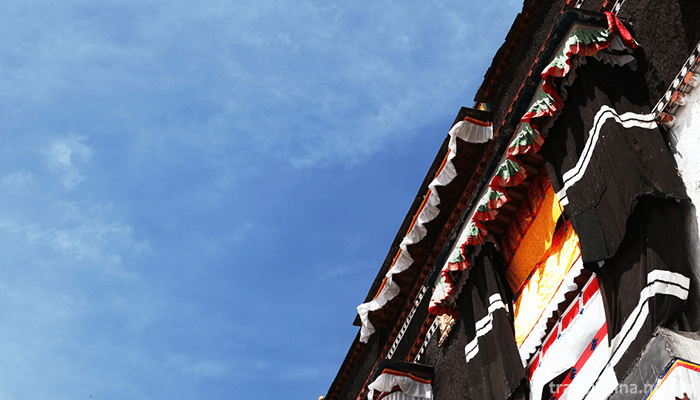
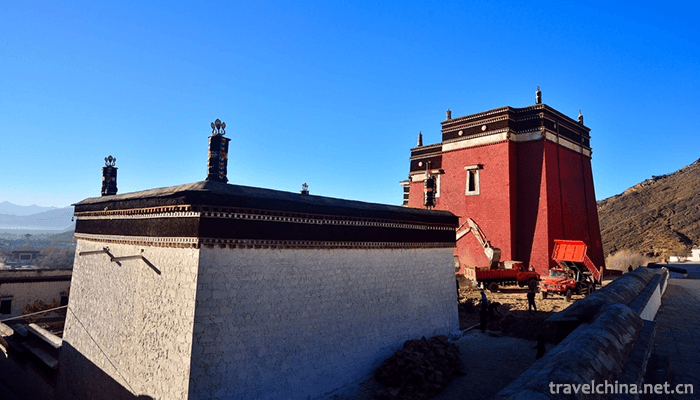
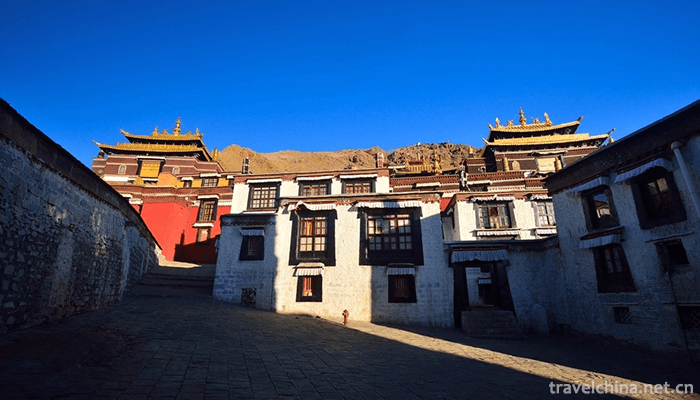
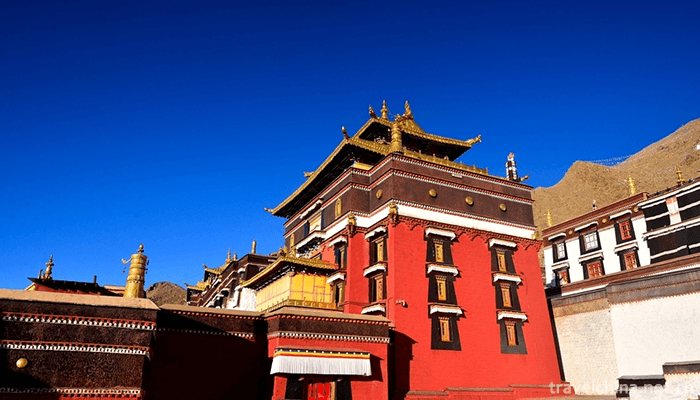
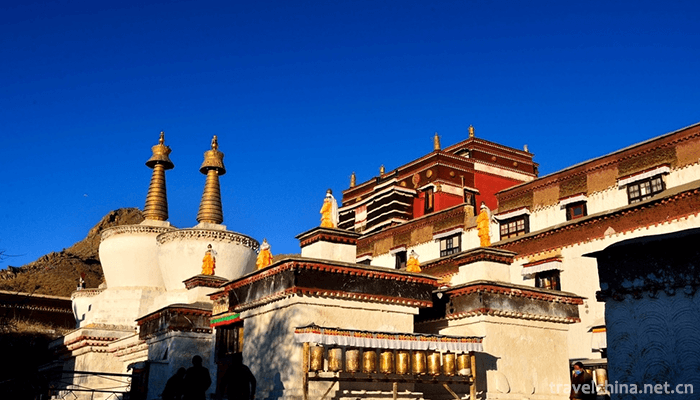
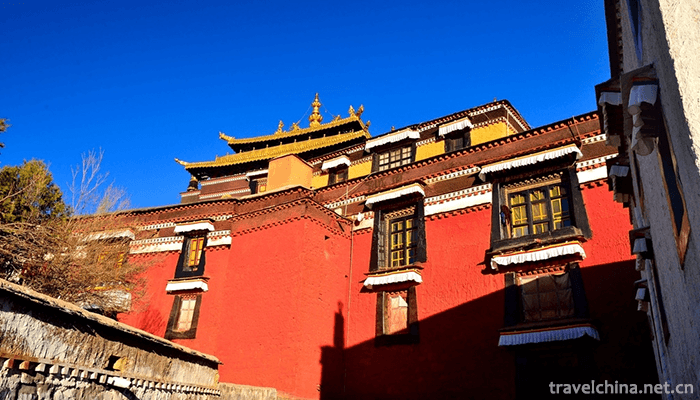
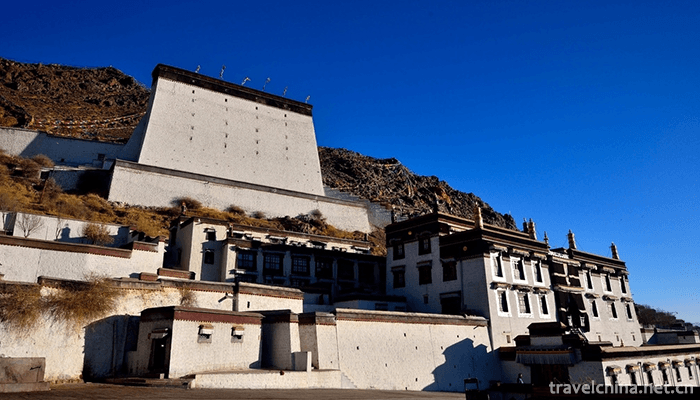
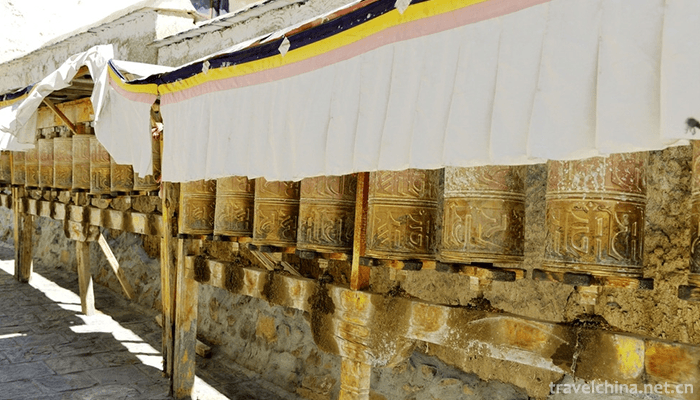
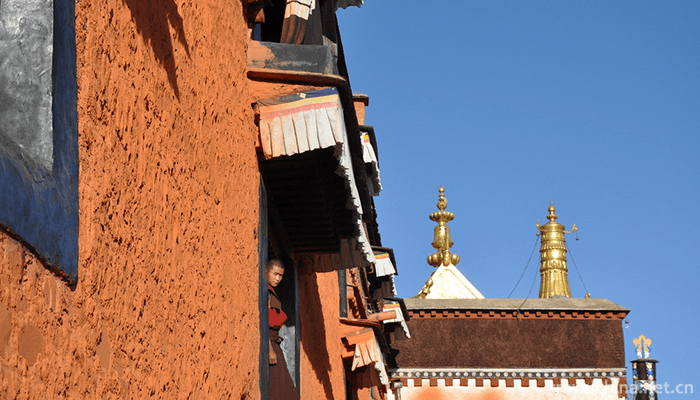
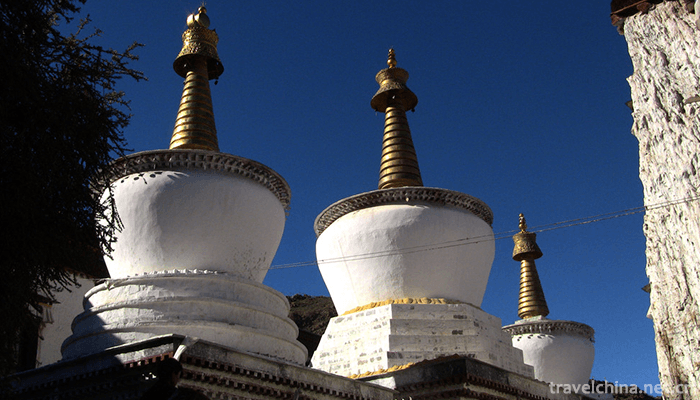
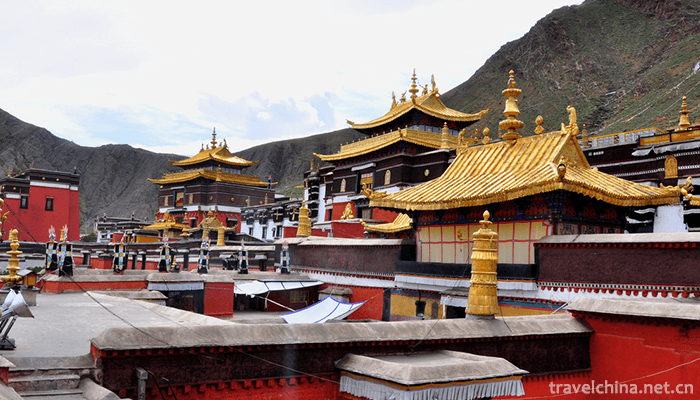
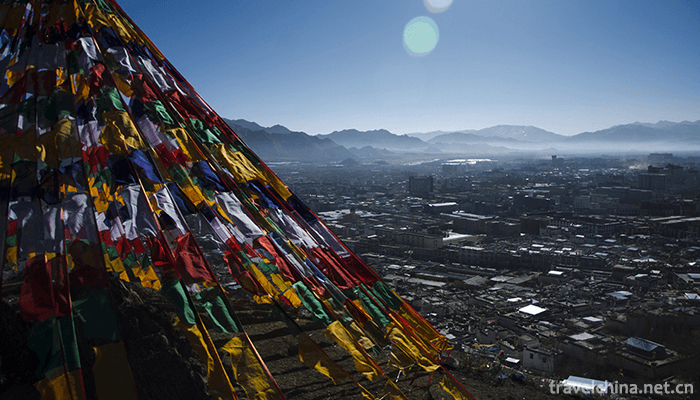
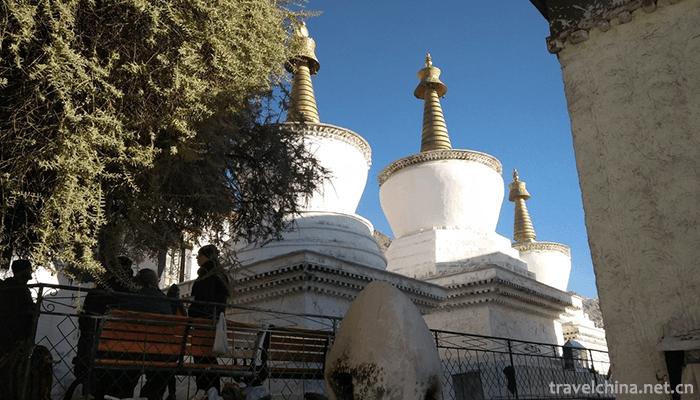
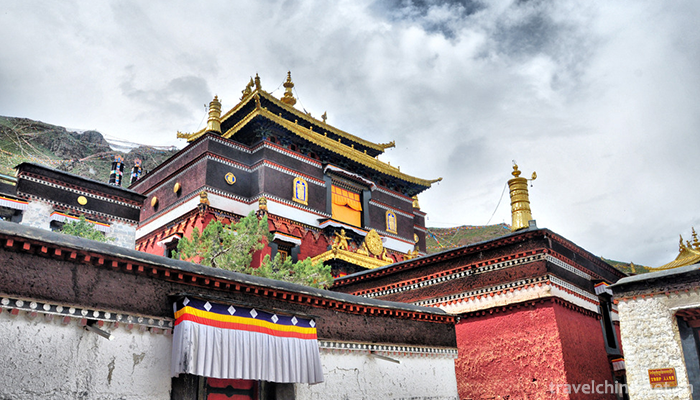
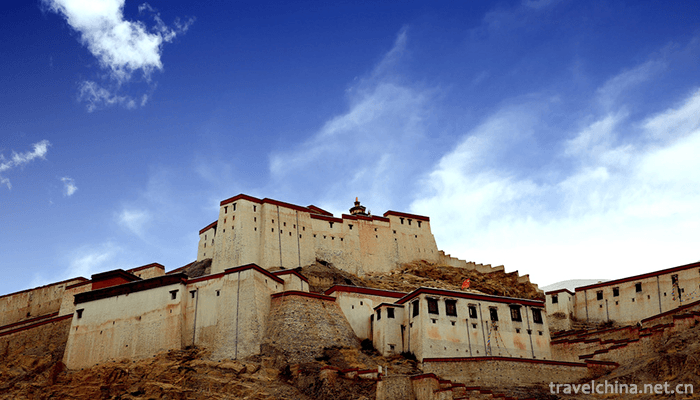
0 Questions
Ask a Question
Your email address will not be published.